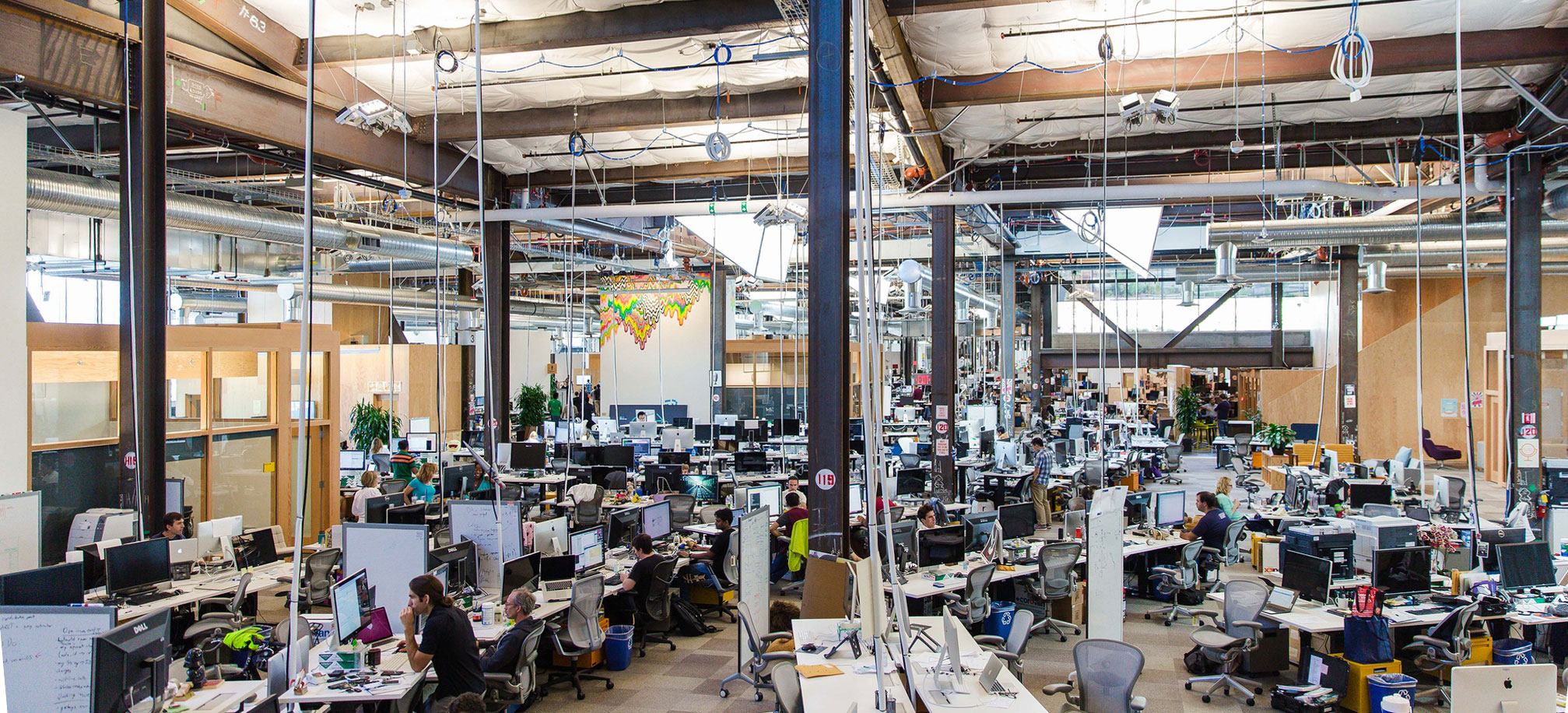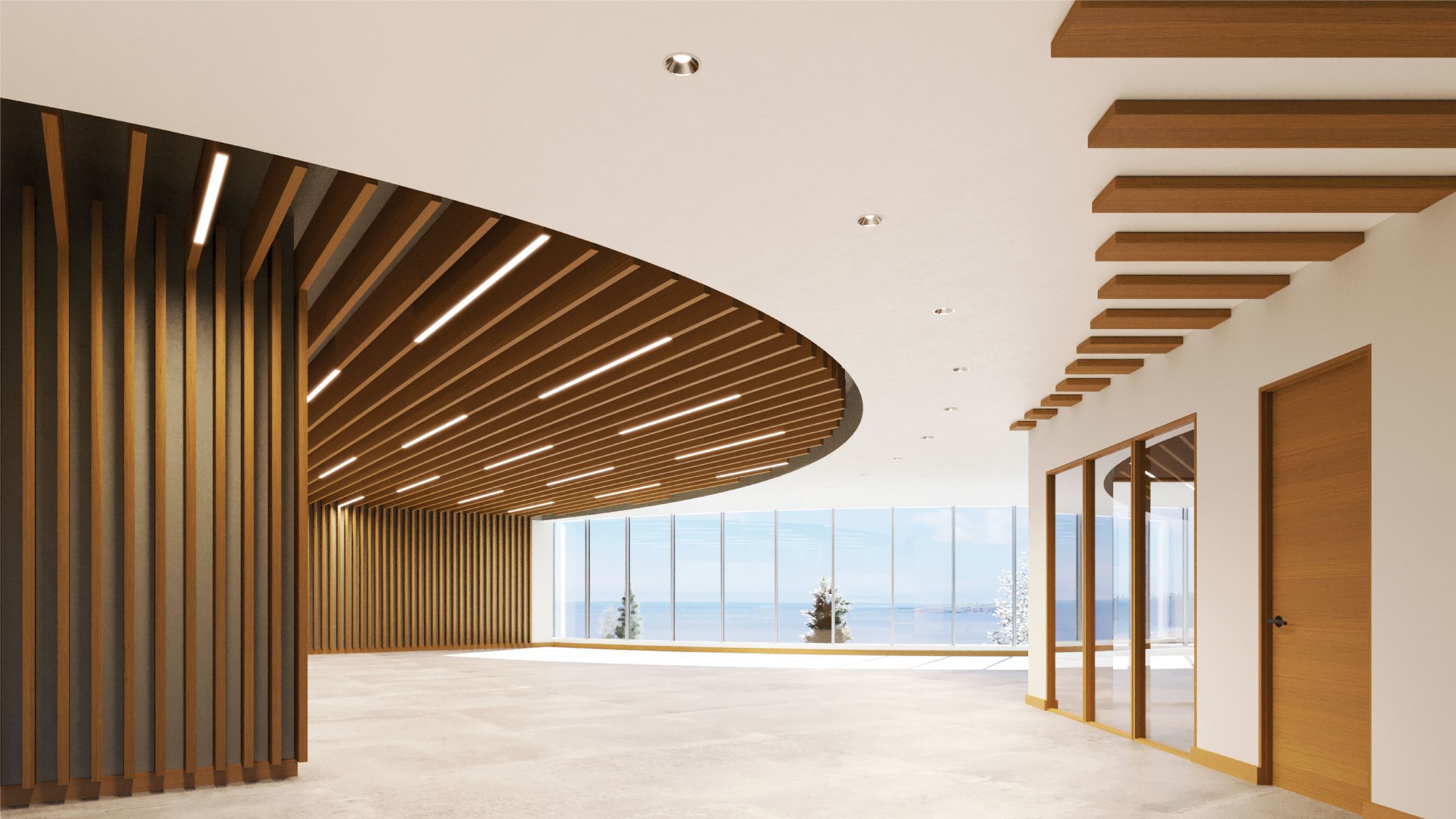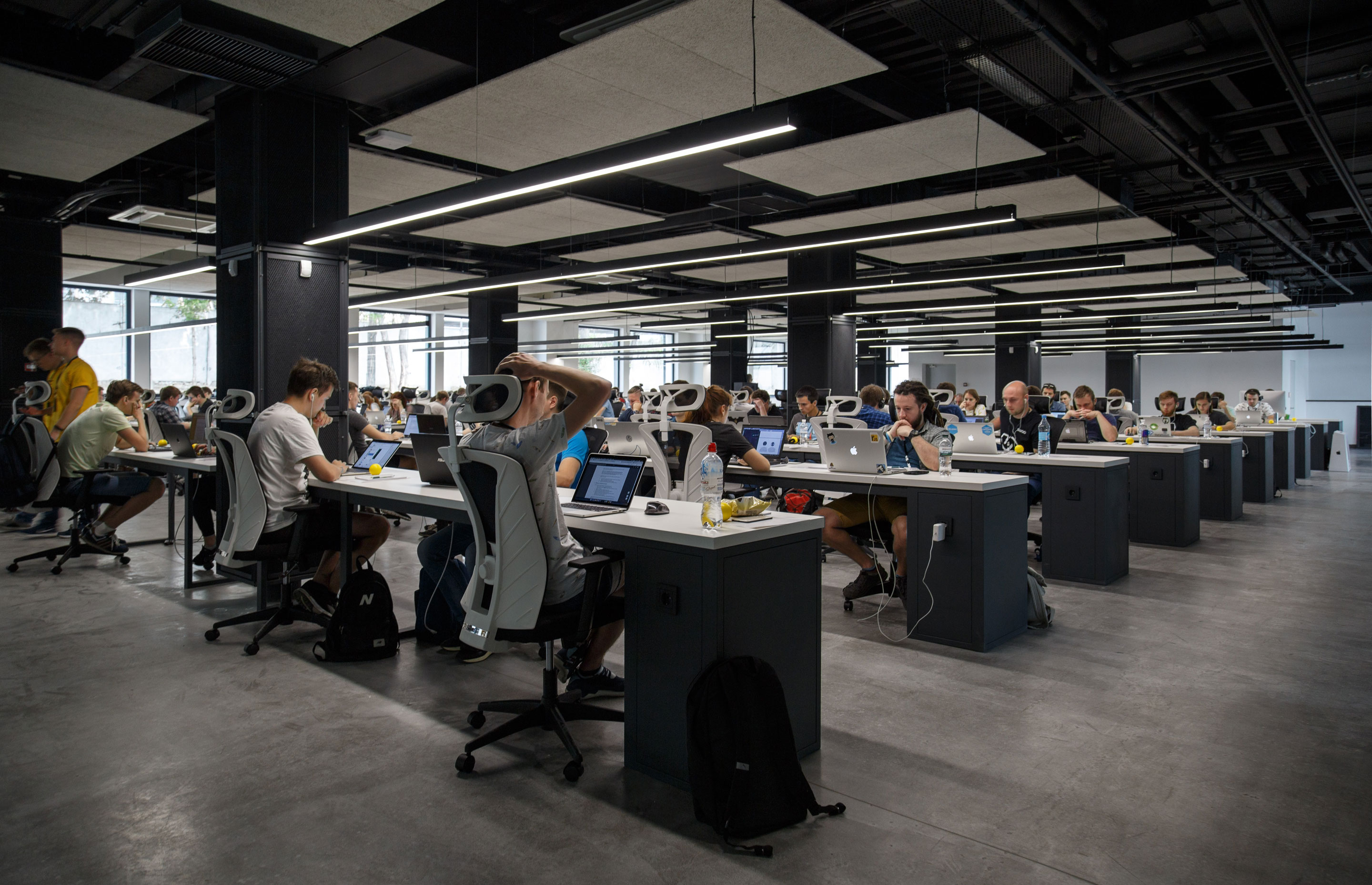We asked professionals in the architecture and design community to share tips and insights for making open offices safer during this unprecedented global pandemic. Their thoughtful replies give insight into current needs and COVID-19’s impact on future trends. Special thanks to IA Interior Architects and ID Studios for your participation!
Many office environments utilize condensed, “collaborative-friendly” work spaces. Upon returning to work, many employees will now view those spaces as a high health risk. What are some short-term and long-term solutions to address employee’s concerns?
I think everyone’s reaction will be to ban the use of these spaces, and any space where people congregate, short term. I do not see this will be a permanent shift however. The pantry or shared kitchen is the worst spot in the office for the spread of bacteria and germs. Conference rooms are not much better. But can we truly envision that this important social center of the office environment going away forever? Is it realistic to expect that people will just stop conversing, socializing and collaborating? Social distancing is just a temporary measure. Perhaps I am too much of an optimist, but when one looks at the timeline of epidemics/pandemics, one has to acknowledge that we have managed to survive them and to return to normalcy. – Tiffanie Pang, LEED AP, IA Interior Architects
“One year our entire office of 20+ got the flu after a friendly holiday gift exchange dice game. Whether it is dice, a door knob, copy machine, or phones – anything that is shared can be the host of a virus.”
Annie Wilson
Associate, ID Studios
Sanitation methods and procedures will be key in instilling employee comfort to work in such environments. (For example), every flu season we face the risk of spreading viral contamination in the workplace. In fact, one year our entire office of 20+ got the flu after a friendly holiday gift exchange dice game. Whether it is dice, a door knob, copy machine, or phones – anything that is shared can be the host of a virus. The following year we still played the game, but bottles of hand sanitizer were spread across the table and used between each round – no one got sick!
COVID 19 and its severity of contagion WILL impact how we design workplaces and how workplaces operate in the future. The extent of this impact will be determined as we transition back to the workplace. We believe we are going to see these two things happening quickly after we return:
- On the operations side, encouraging employees to work remote or use PTO when they are feeling even mildly ill as well as encouraging exceptional hygiene (washing and sanitation).
- On the design side, we’ll likely be planning more rooms dedicated to video conferencing (to include the right acoustics, cameras, backgrounds, etc.) -Annie Wilson, Associate, ID Studios
How do you think existing open office layouts could be reconfigured to ensure health and safety of employees once they go back to work?
“Conference rooms might remove half the chairs. Open collaboration areas with small scale furnishings can be re-planned. Break rooms or food service areas can reduce amount of tables and chairs.”
Tiffanie Pang
LEED AP, IA Interior Architects
Walls are walls and are not easily or cheaply moved, so I believe any device that will facilitate our social distancing will be based on furniture. Depending upon the existing setup, open plans could be reconfigured (desks probably won’t be, since they are tethered in place to their power/data source) in areas where people tend to gather. Conference rooms, might remove half the chairs. Open collaboration areas with small scale furnishings can be re-planned. Break rooms or food service areas can reduce amount of tables and chairs. – Tiffanie Pang, LEED AP, IA Interior Architects
Architects, Designers, Furniture Manufacturers and Furniture Dealers will place an emphasis on design to support healthy working environments. As designers we will be brainstorming, experimenting, and giving a lot of thought to options for the workplace that might ensure a greater level of well-being. We will likely be asked to do this and we should as part of our expertise and contribution to our clients’ work space. We will find opportunities to improve our existing planning through this thought process, so hopefully there will be a long term benefit to the office environment with some positives coming out of a difficult time. We will continue to utilize place-making and collaboration as part of the catalyst for well-being, but may enhance and fine-tune the details of those places. – Deborah Elliott, Principal, ID Studios
A shift towards better optimization of office space and workstations has introduced trends such as coworking spaces and hotdesking/hoteling. Considering the key role that shared surfaces serve in transmitting viruses, bacteria, and other microbial particulates, how will this trend be affected?
Overhead expenses associated with real estate will likely remain a primary driver for remote working and shared workspaces such as Co-working and hotdesking/hoteling. End user expectations for sanitized surfaces will increase whether it is achieved through the properties of the surface materials and/or the sanitizing protocols of a company. – Jill Russell-Layman, Associate Principal, ID Studios
In the future, do you think more attention will be given to anti-viral properties of materials used?
“I am familiar with selecting finishes that can stand up to any number of “biohazards,” so I can see that this level of attention to selection of finishes for a niche market will quickly spread and become a common consideration across all markets.”
Tiffanie Pang
LEED AP, IA Interior Architects
Definitely. There is chatter all over social media and among colleagues and friends, regarding how long the virus lasts on different surfaces, so materials are going to be more relevant than ever. (COPPER! For example.) Having worked before on projects for senior living care facilities, I am familiar with selecting finishes that can stand up to any number of “biohazards,” so I can see that this level of attention to selection of finishes for a niche market will quickly spread and become a common consideration across all markets. It will also be interesting to see how technology can contribute to help produce more materials integrating substances with more antimicrobial and antiviral properties. I would hope however that the technology race in this respect would still be mindful of sustainable practices. – Tiffanie Pang, LEED AP, IA Interior Architects
Considering the important role that humidity plays in diminishing the transmission of viruses and infectious diseases, do you think increasing humidity will be one of the components in designing a healthier work environment?
Researchers continue to evaluate a myriad of impacts of the working environment on the wellbeing of end users and end users are becoming more aware of the benefits of WELL working environments. As a result, WELL working environments have gained great traction in office and corporate architecture and design. We do believe that humidity levels will receive increased attention in the design of office environments. – Jill Russell-Layman, Associate Principal, ID Studios
For a long time, we’ve seen the average distance between workspaces shrink. Do you think COVID-19 will trigger a reversal of this trend?
I think initially, no. I believe in order to effectuate an immediate solution, most changes will be behavioral as this is most easily accomplished quickly and more economically compared to changing the physical environment. Working from home has been the most obvious and easily accessible solution, but it is not a long term one. Many firms are doing studies on how our clients can slowly reintroduce their staff back into the office environment. It involves strategies such as partial and/or staggered shift attendance, more rigorous and regularly scheduled cleaning, etc. in order to allow people to maintain the safe social distance. However, it is also true that the office cannot be considered the first and only line of defense, behavioral changes will need to happen foremost at home, and at other public venues such as public transit, schools, etc.) For the long term outlook, I can see a moderate change in how we define the open work plan; however until there is a way to mitigate the increased cost with the increase SQFT per person, I don’t see that drastic changes will be happening any time soon. – Tiffanie Pang, LEED AP, IA Interior Architects
Overhead expenses associated with real estate will likely remain a primary driver for remote working and shared workspaces such as co-working and hotdesking/hoteling. We do not believe that COVID-19 will trigger a reversal of this trend. It may trigger, however, an evolution in the planning and design of these workspaces in the short-term. – Jill Russell-Layman, Associate Principal, ID Studios
Do you think re-incorporating barriers between workspaces such as cubicles or personal dividers would help to reduce the spread of viruses in the future?
The evolution of planning and design of workspaces will consider methods for sanitation and transmission. However, this will likely not be a driving factor as overall function will remain a top planning requirement. We believe that the properties of materials used will adjust and the strategies in the design of workstations will have an emphasis on the types and locations of components incorporated into a workstation. – Jill Russell-Layman, Associate Principal, ID Studios
I personally do not think so. Or maybe it’s my personal aesthetic preferences getting in the way here… but I think once we start doing this, what is the difference between divider panels and the once-eschewed Dilbert era taller panels? Again, I think a combination of behavioral modifications (social distancing, frequent hand washing, learning to cover one’s face when sneezing or coughing) in combination with augmented sanitary practices and social distancing would be more effective. I would prefer that we stop relying on “things” to keep us safe, because these same things seem to absolve us of any personal responsibility. If individuals and institutions in any society learned and adhered to safe practices, and if our governments become better prepared to deal with outbreaks/epidemics, we will have a huge head start. – Tiffanie Pang, LEED AP, IA Interior Architects
Do you think that more companies will be open to their employees teleworking or working from home on a more regular basis in the wake of this pandemic? What kind of design changes could best accommodate this increase in remote workers?
In the wake of this pandemic, employers and employees have been able to develop and expand successful methods supporting remote working. We do believe that this experience and overhead expenses associated with real estate will drive an increase in remote working, shared workspaces and hotdesking/hoteling. – Jill Russell-Layman, Associate Principal, ID Studios
“This will help somewhat relieve the stigma of working from home, but … there will be a difficulty transitioning back to being full time in the office.”
Tiffanie Pang
LEED AP, IA Interior Architects
Definitely. The companies and industries that are lucky enough to be able to do so will continue for a while. Many of us who do computer based work are already used to working remotely during off hours, late at night or on the weekends, to the point that transitioning to doing it full time was not too terribly difficult. I see that this will help somewhat relieve the stigma of working from home, but as with any double edge sword, I see also that there will be a difficulty transitioning back to being full time in the office, given the current circumstances. It’s going to be an interesting balancing act. – Tiffanie Pang, LEED AP, IA Interior Architects


